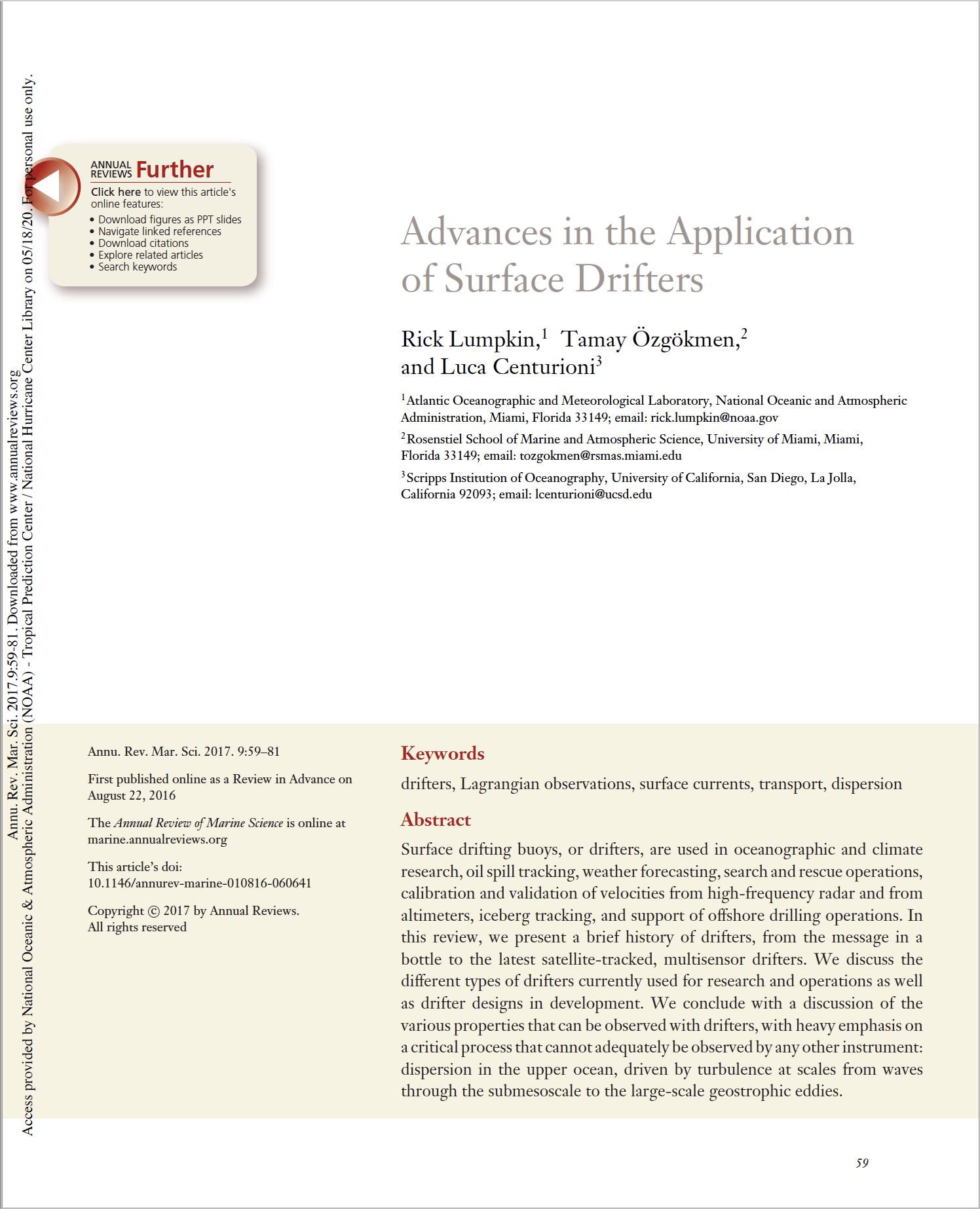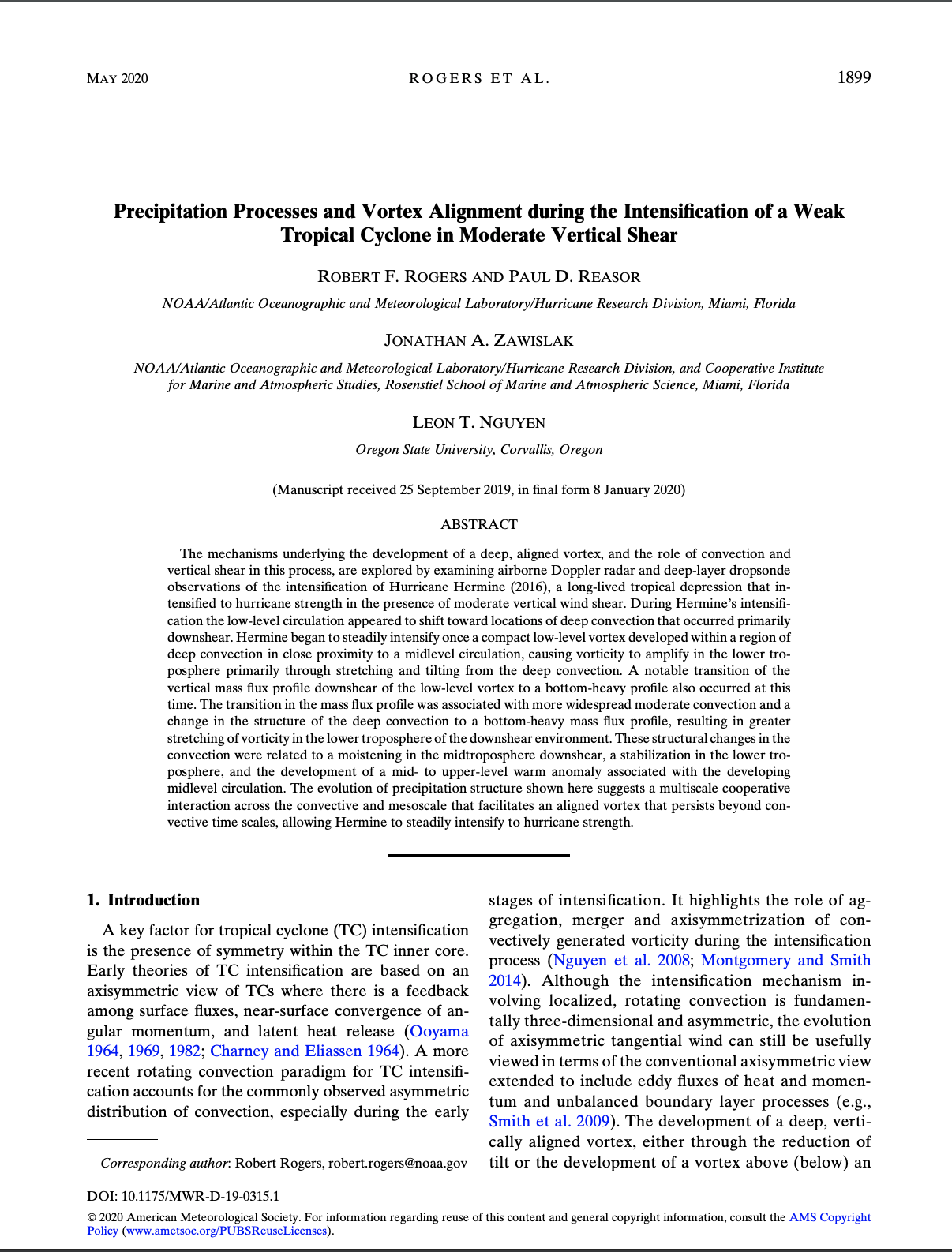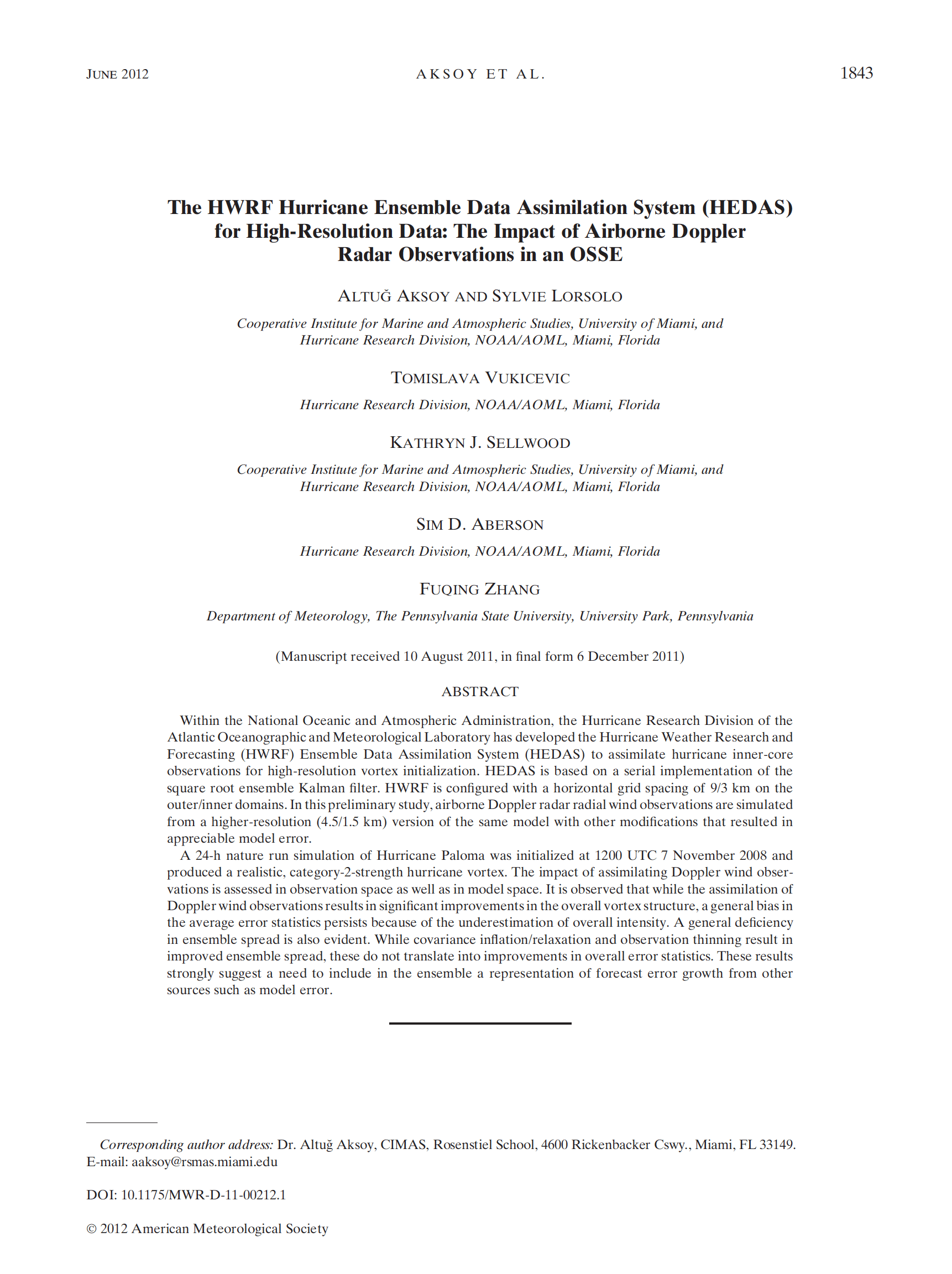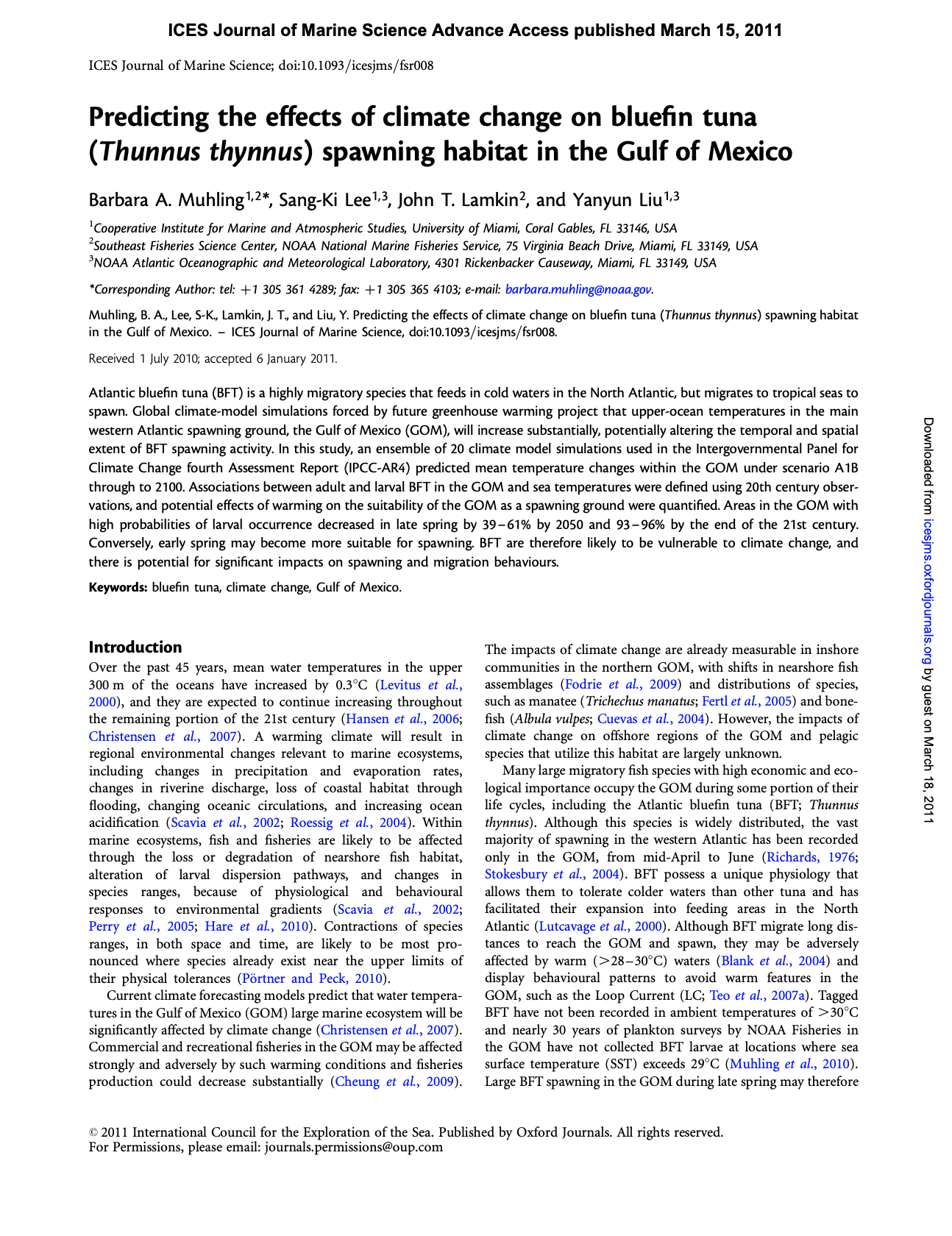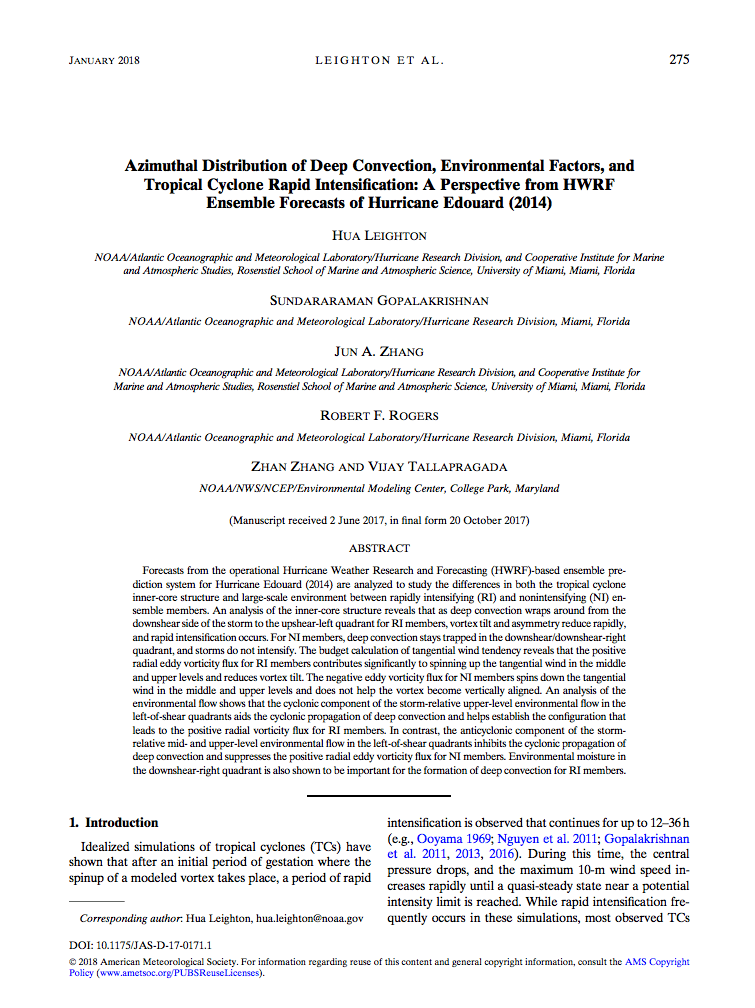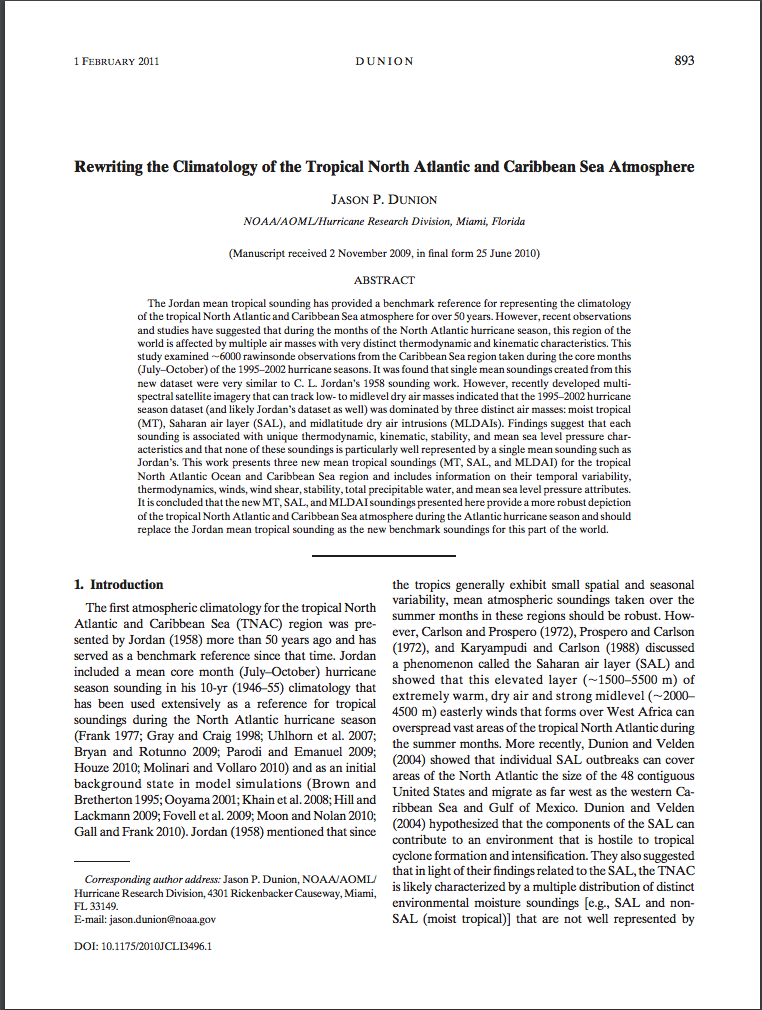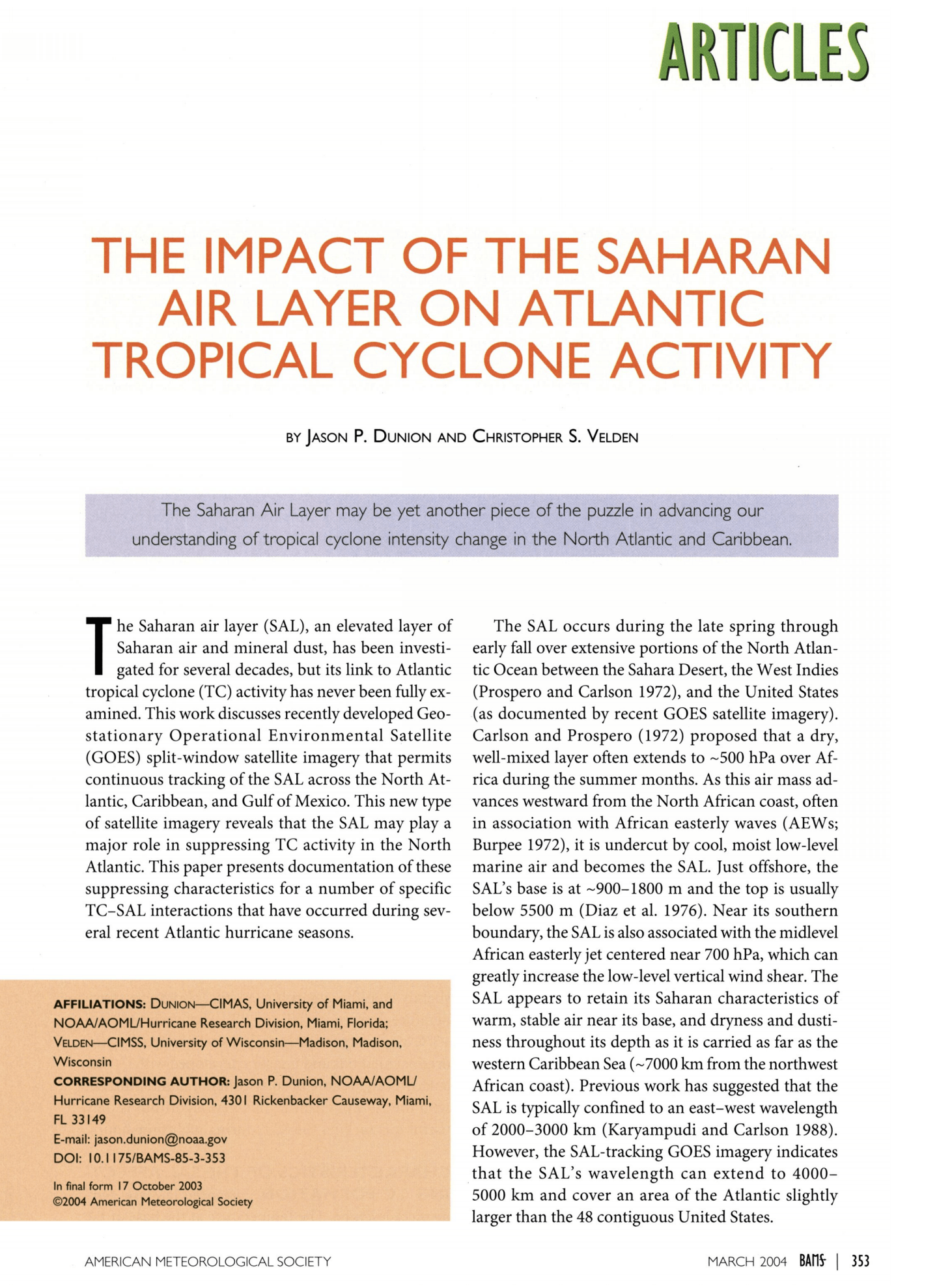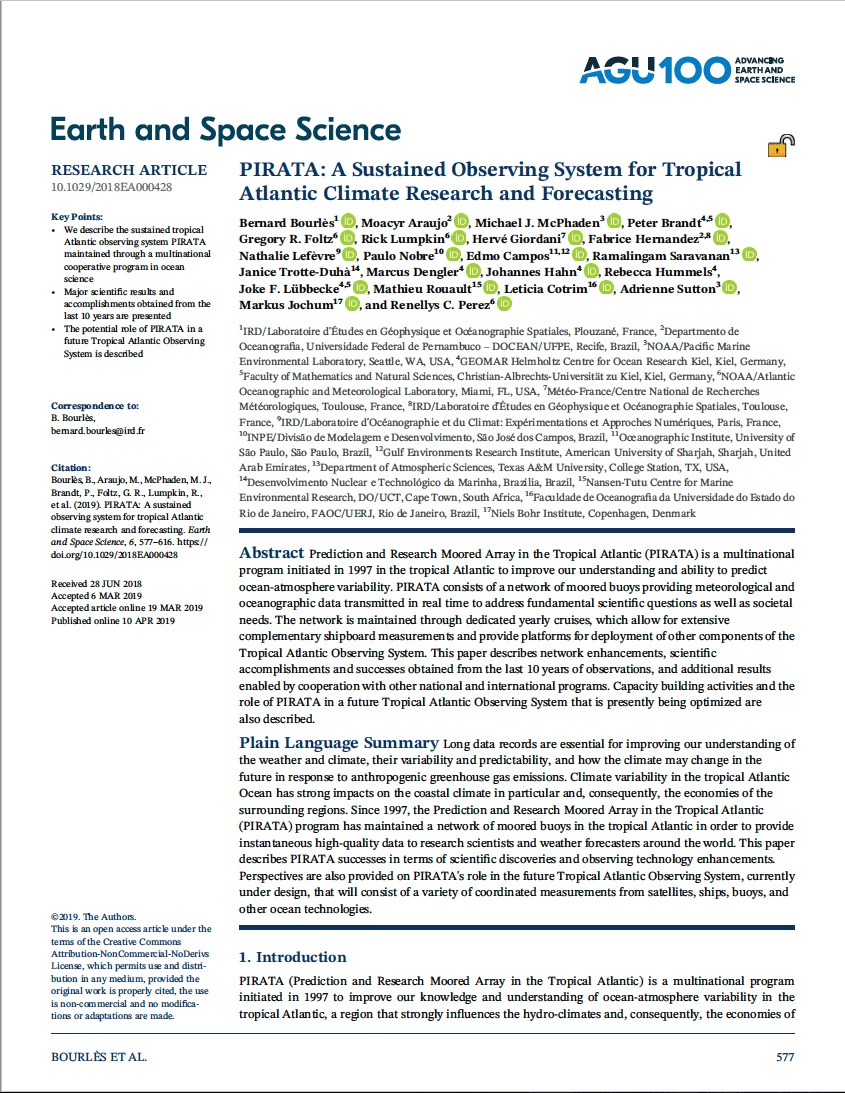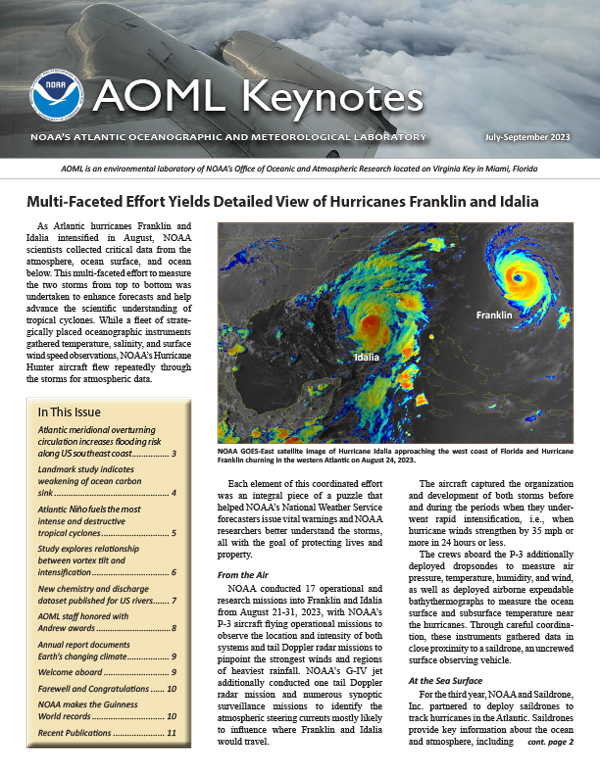Vertical Turbulent Cooling of the Mixed Layer in the Atlantic ITCZ and Trade Wind Regions
Foltz, G. R., Hummels, R., Dengler, M., Perez, R. C., & de Araujo, M. (2020). Vertical turbulent cooling of the mixed layer in the Atlantic ITCZ and trade wind regions. Journal of Geophysical Research: Oceans, 125, e2019JC015529. https://doi.org/10.1029/2019JC015529
Abstract:
The causes of the seasonal cycle of vertical turbulent cooling at the base of the mixed layer are assessed using observations from moored buoys in the tropical Atlantic Intertropical Convergence Zone (ITCZ) (4N, 23W) and trade wind (15N, 38W) regions together with mixing parameterizations and a one-dimensional model. At 4N the parameterized turbulent cooling rates during 2017–2018 and 2019 agree with indirect estimates from the climatological mooring heat budget residual: both show mean cooling of 25–30W/m^2 during November–July, when winds are weakest and the mixed layer is thinnest, and 0–10W/m^2 during August–October. Mixing during November–July is driven by variability on multiple time scales, including subdiurnal, near-inertial, and intraseasonal…

